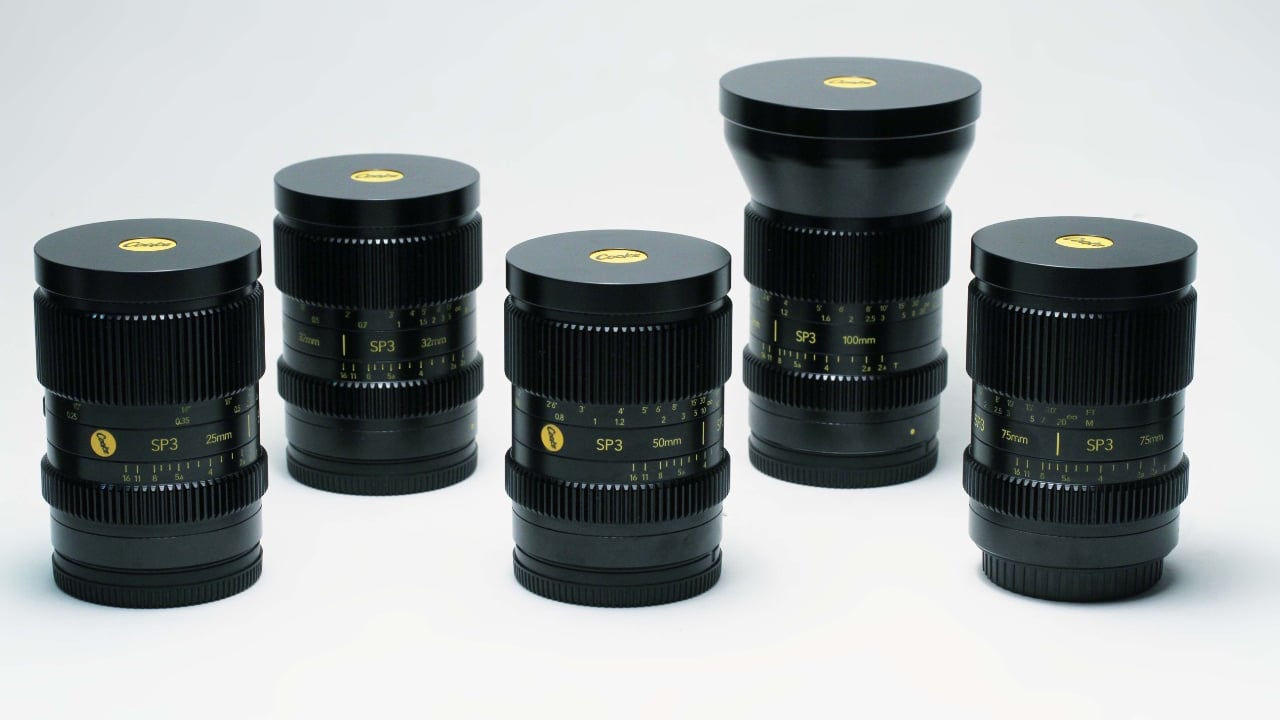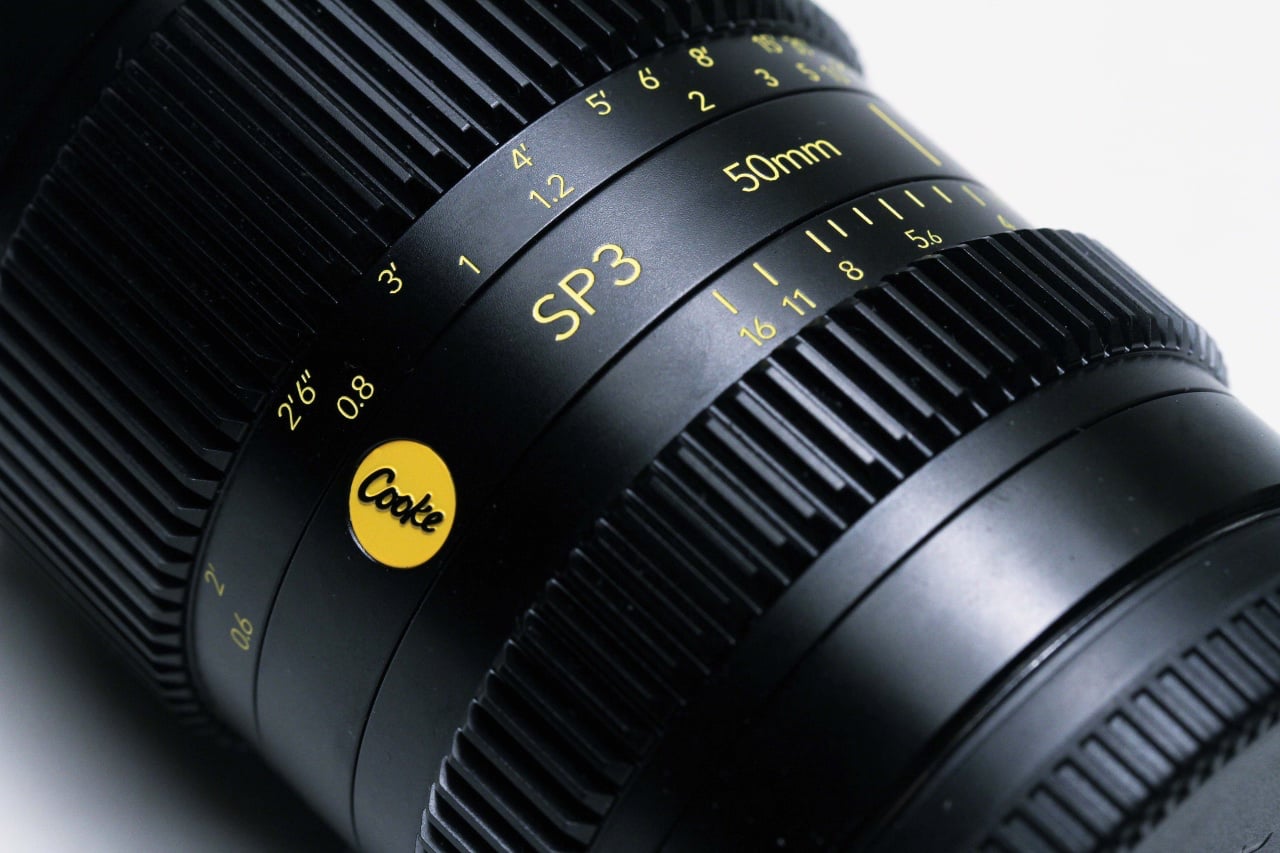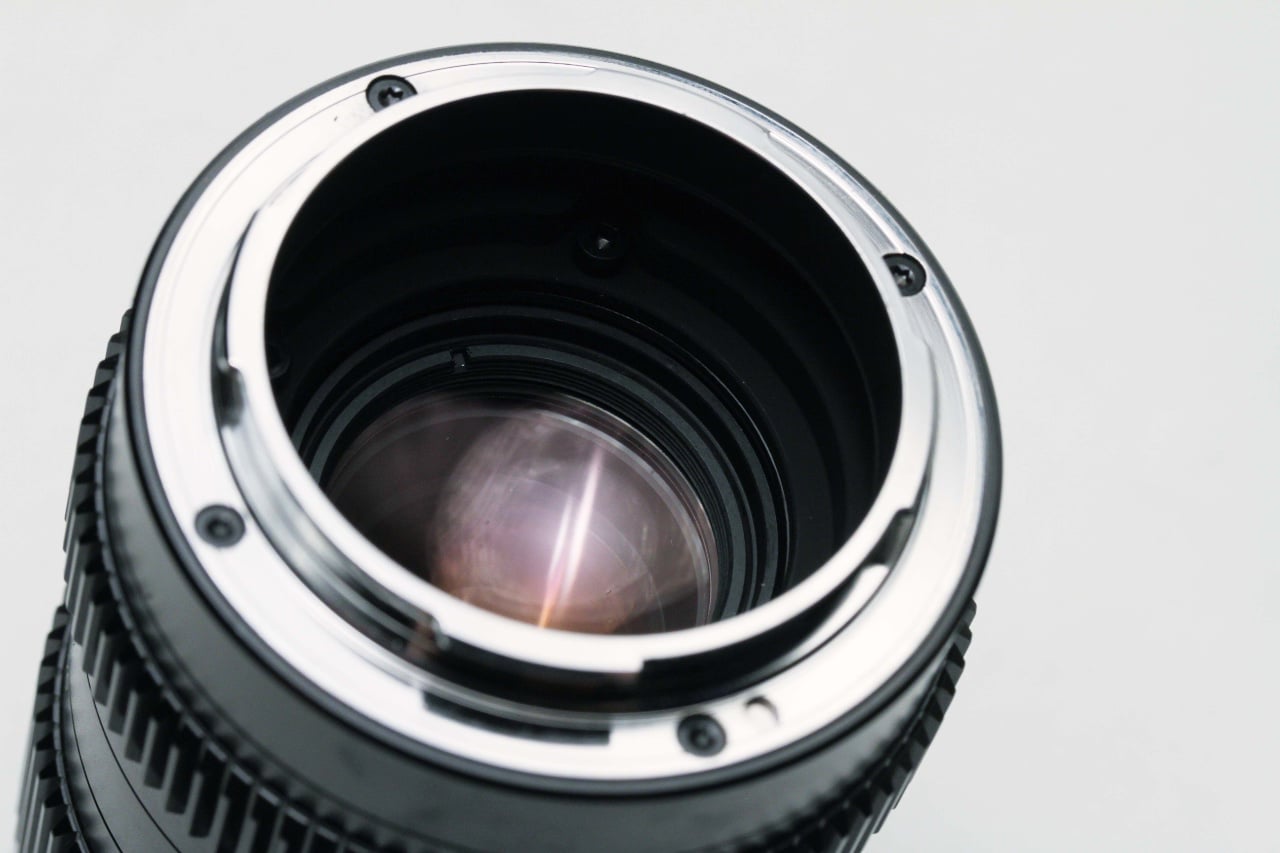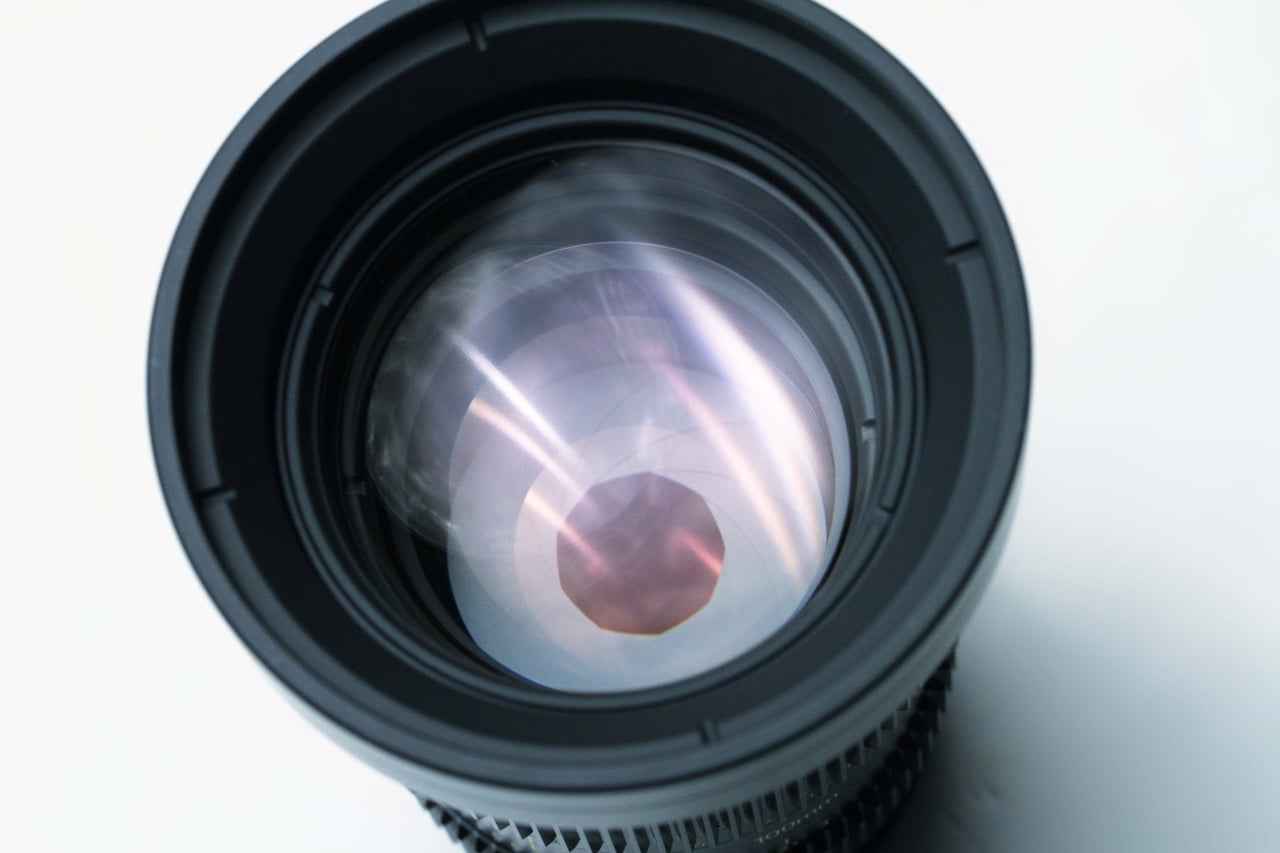
A new lens for a new era with an avowedly retro sensibility. Phil Rhodes gives his verdict on the new Cooke SP3 mirrorless prime lens series.
Cooke’s most recent lens release has been received as a surprise from a company so embedded in the history of high-end cinematography that it might be thought of as having influenced the entire art form. Still, launching a (comparatively) affordable lens with deliberate character into the current market should come as no shock to anyone. It’s this dichotomy, as much as the characteristics of the new Cooke SP3s, which will affect how people think about them.
What Cooke has created is very much a modern lens set, with 25, 32, 50, 75, and 100mm focal lengths all at T2.4, with full-frame coverage in short mounts. The set we saw had an early, pre-release version of Cooke’s L-mount to suit Blackmagic’s new Cinema Camera 6K, with E available now, M to follow early next year, and RF to follow.
Imitation, not recreation

Fit and finish are, as we'd expect, beyond reproach. The extra-wide bands of gearing make setup easy
There is a limit to which these are realistically a blow-for-blow reincarnation of the classic Speed Panchro. Speed Panchros were made using glass formulations that are no longer available and were designed to cover much smaller frames. The SP3 lenses are intended to recapitulate the classic look with similar technology, an approach that becomes clear when we glance into the back of the lenses. It’s less so at the extremes of focal length, but there’s often some space between the rearmost element and the mount, making us wonder whether they could be made in a deeper mount such as PL or EF.
The lenses are diminutive by cinema lens standards. That’s presumably in order for usability on gimbals and the sort of car rigs where this sort of thing seems most likely to find use. So, we don’t end up with a tiny, high-performance modern camera dangling desperately from the back of a vast lens, as happens when someone hangs something mirrorless on the back of a continent-sized anamorphic zoom. Fit and finish is predictably superlative, without even the vaguest hint of slack or wobble. The mechanical weak point is the mount: bayonet-style stills mounts will never have the solidity of a breech locking mount like (L) PL, but that’s inevitable.
Cooke SP3s: A question of character

The Speed Panchro designs on which the SP3s are based were originally intended for much deeper mounts, which might explain why there's so much space inside this L mount
As we’ve said before, lenses with deliberate character need to be chosen carefully. Without wanting to make a direct comparison to the SP3s, many small, fast, characterful, ancient lenses are available for pocket money on eBay, which illustrates the considerations. Forming a matched set can be very difficult. The SP3s match wonderfully, even down to the flares, and while we’ve only seen one set, it’s probably safe to assume that modern manufacturing techniques can keep things consistent. The SP3s are less warm than most people expect Cookes to be, with less noticeably amber-tinted flares, though that’s more an issue of faulty expectations than the SP3s’ performance. Not every Cooke series does that, and these don’t — much.
Artifacts in defocussed areas (and there are plenty on a full-frame camera) are a more visible consequence of Cooke’s involvement. Here, the SP3s differentiate themselves. Most stills lenses aren’t nearly so pretty in this regard, and sharpness-focussed cinema lenses from the affordable end of the market often seem willing to sacrifice nice focus falloff in favor of detailed pictures. The SP3s don’t do that. The caveat, if any, is that a deliberately retro design inevitably begins to lose contrast and resolution toward minimum aperture, especially in the corners on a really big chip. Again, this is hard to compare to original Speed Panchros as they aren’t designed to cover really large sensors anyway, but if you want organic corners, open up, and you’ve got them. Or, alternatively, close down, and you haven’t so much.

Interpreting coatings by the colour they reflect is a fine art, but the lack of pronounced greenish and purplish reflections is some indication of the SP3s' historic origins
In a way, that’s what’s nice about these. The nice focus falloff is unusual in lenses of this size, but it’s the option to choose a more- or less organic picture that makes these lenses useful in a wider range of situations. Fast modern cameras expand our option to choose an aperture for creative rather than technical reasons, and that is particularly valuable here. Some manufacturers have turned out deliberately imperfect lens ranges simply by removing the coatings from an existing design, which sometimes creates pictures full of overpowering glare that lacks character or color and causes gaffers to grumble and reach for a flag cart. The SP3s will flare boldly if pushed, but you have to push. That requirement creates a controllability that makes them a much more plausible option for the owner-operator who might only want to spend £15k on a set of lenses once and, having done so, would expect them to be useful on a wide range of jobs.
Mass market, Cooke style
Value is, therefore, an interesting question. The SP3s might be considered Cooke’s lens for the masses, but they’re still not that cheap; they’re a shade more than £3000 a lens, or $4200 each. It’s very possible to get brand new full-frame PL mount primes from respected manufacturers for that. Zeiss CP3s regularly go for a third less than SP3s and can plausibly be filtered to suit more or less anything, which is one reason they’re a fairly common owner-operator lens.
It’s also fairly obvious that the SP3s are not going to be handmade in Cooke’s storied Leicester works. They’ve farmed out the manufacturing on a product that’s likely to sell massively more units than could plausibly be licked into shape in the way that Cooke has worked for decades. The explanation here is that Cooke is relying not so much on controlling the manufacturing process - though it has naturally done that - but on a carefully designed test protocol. No matter what anyone thinks of where things are made and how much that matters, that’s the right answer. Rules can be broken; test results do not lie.
Rental houses will buy them because they’re an option for the B, C, and subsequent cameras on Cooke-centric movies. At the same time, owner-operators might well find that controllable imperfection useful on anything from an interview with a fussy CEO to a music video where we throw in lots of backlights and let the chips fall where they may. It’s clear that a company like Cooke can’t do this sort of thing too often, much as it’s likely to make a big pile of money on the idea, but for now, it’s really hard to dislike.
Tags: Production Lenses


Comments